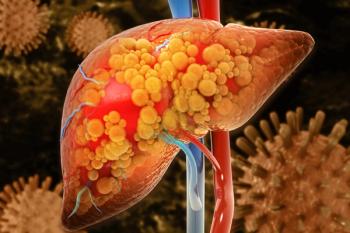
Future Parkinson Disease Stage May Be Predictable by Present Low HRQOL
This follow-up study of patients first analyzed 10 years ago sought to determine if health-related quality of life (HRQOL) was still a reliable predictor of Parkinson disease severity, especially at it relates to Hoehn-Yahr stage increase.
Low health-related quality of life (HRQOL) appears to remain a reliable predictor of disease severity for individuals with
“Previous longitudinal studies of such are very limited,” the authors wrote.
This follow-up study focused on patients who all had
For the present study, patients were divided into 2 groups, based on progression or not in Hoehn-Yahr stage, with multiple logistic regression analysis adjusting for age and disease duration and 36-item Short-Form Health Survey (SF-36) scores at the 2-, 4-, 6-, and 8-year marks indicating HRQOL.
At baseline, the mean (SD) patient age was 68.3 (7.0) years, mean (SD) disease duration was 85.4 (69.2) months, half had a history of falling, the mean (SD) SF-36 score was 61.1 (19.6), and mean (SD) levodopa equivalent dose (LED) was 390.3 (245.0) mg/d.
Overall, SF-36 scores at 2, 4, 6, and 8 years after the first study, as well as
- 2-year Tinetti balance (P = .047) and SF-36 score (P = .014)
- 4-year motor complication (P = .04) and SF-36 score (P = .019)
- 6-year step number (P = .03) and SF-36 score (P = .012)
- 8-year SF-36 score (P= .016)
After adjusting for age and disease duration, multiple logistic regression analysis produced these results:
- SF-36 score at 2 years (odds ratio [OR], 1.112; 95% CI, 1.012-1.223; P = 0.028)
- SF-36 score at 4 years (OR, 1.066; 95% CI, 1.002-1.135; P = 0.045)
- SF-36 score at 6 years (OR, 1.074; 95% CI, 1.010-1.142; P = 0.023)
- SF-36 score at 8 years (OR, 1.109; 95% CI, 1.012-1.214; P = 0.026)
For this study at 2, 4, 6, 8, and 10 years, data were available on 28, 27, 26, 24, and 22 patients respectively. Every 2 years, the numbers of those who progressed to a higher Hoehn-Yahr stage increased: 21.4% at 2 years, 25.9% at 4 years, 53.8% at 6 years, 62.5% at 8 years, and 68.1% at 10 years.
“This study found out that HRQOL, as measured by SF-36, was a significant predictor of the upgrade of Hoehn-Yahr stage in 10 years,” the authors concluded. “The lower HRQOL, particularly in social functioning, may reflect the severity of both motor and nonmotor symptoms.”
Limitations to generalizability of their findings include that SF-36 was not developed specifically for patients with PD and the 30-patient sample size, while strengths include that the SF-36 has proved effective at monitoring population health and evaluating treatment effects.
Reference
Kataoka H, Sugie K. Health-related quality of life may predict disease staging in 10 years in Parkinson disease with Hoehn-Yahr stage III. Neurol Clin Pract.2021;11(3):e261-e266. doi:10.1212/CPJ.0000000000000924
Newsletter
Stay ahead of policy, cost, and value—subscribe to AJMC for expert insights at the intersection of clinical care and health economics.












































